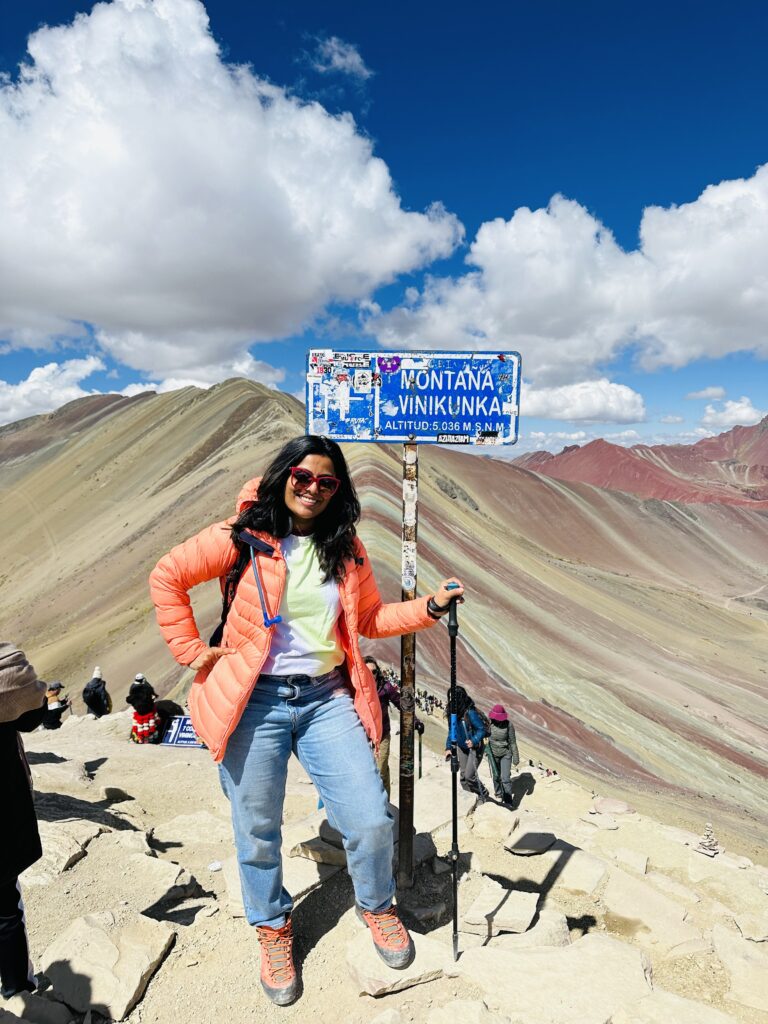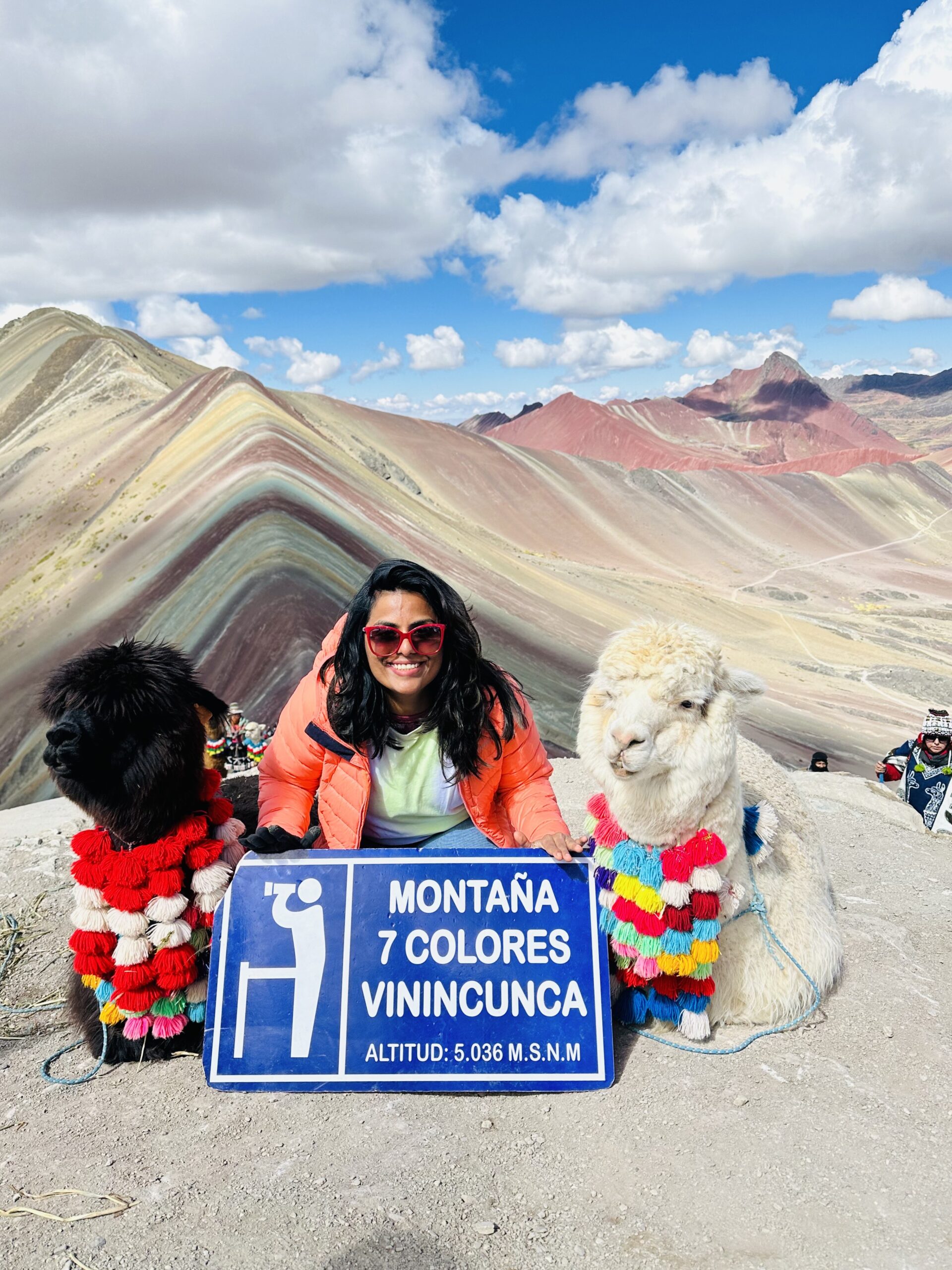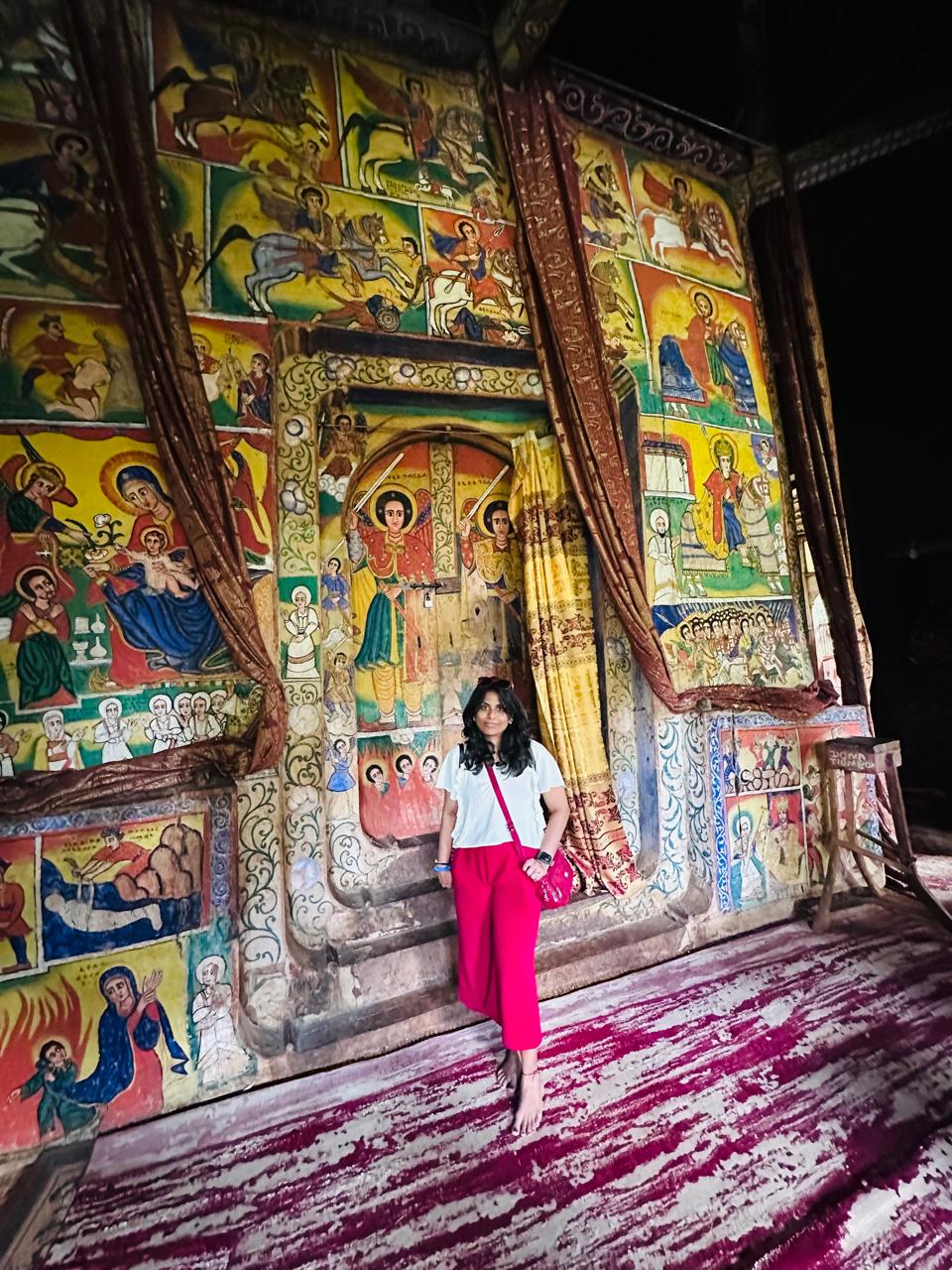The alarm rang at 3:30 a.m., but it wasn’t needed — I was already awake, wide-eyed in the freezing dark, layered in everything I owned, and shivering slightly outside my Airbnb. The plan was simple: get picked up for my Rainbow Mountain trek at 4 a.m. and witness one of Peru’s most spectacular sights. The bus, however, had other plans — it rolled up only at 5 a.m., long after my fingers had stopped functioning and I had begun wondering if fever was part of the package deal.
We drove about 100 kilometers southeast of Cusco, a ride that took nearly 3 hours, with brief stops and sleepy landscapes that slowly transformed from colonial towns to desolate, wind-kissed plateaus. The Andes were unfolding all around us.
The Andes: Spine of South America, Cradle of My Shivering
Our guide, an animated storyteller named Elias, began his geography lesson just as the sun was sneaking up behind the icy peaks.
“The Andes,” he said, “run from Patagonia in Argentina all the way to Venezuela — like a backbone for the continent.”
In Peru, he explained, the Andes split into two ranges: the Cordillera Oriental (eastern) and the Cordillera Occidental (western). Behind the Oriental range lies the Amazon jungle. Behind the Occidental range? The Pacific Ocean, he clarified with a wink. (It’s the Pacific — that’s the answer to your sea question.)
Between the two ranges is the Altiplano, a vast high plateau where the legendary Lake Titicaca lies — 80% in Peru, the rest in Bolivia. The Rainbow Mountain sits near the edge of this plateau, part of a high-altitude dreamscape that’s as breathtaking in its beauty as it is in its oxygen levels.
The Rainbow Valley and the Long Walk Up
Before reaching the mountain, we stopped for a quick breakfast in a tiny village. Everything — from the tea to the bread — was cold, and so were my toes. We then drove a bit further and reached the start of the trek — in the Rainbow Valley, near the village of Chillihuani, roughly at 4,600 meters above sea level.
From here, it was a 4.5 km hike to the summit of Vinicunca. You could take a horse for the flatter parts, but the last stretch had to be done on foot — a steep incline where the air turned thinner and thoughts heavier.
I opted to walk. At first, it was manageable — cold, but flat. A few minutes in, I spotted a little girl holding two alpacas, both wearing sunglasses, looking cooler than all of us. Obviously, I posed for a photo.
Then came the incline. A proper, huff-and-puff, head-down-don’t-look-up kind of incline. The lack of oxygen made every step feel like a philosophical decision. But then — over the final ridge — it appeared.
Vinicunca: The Rainbow Mountain of the Andes
5,036 meters above sea level, it said on the board at the summit. People were queued up to take selfies near the sign. Behind them — and eventually, behind me — was the Vinicunca Rainbow Mountain, a geological wonder striped in reds, greens, yellows, purples, and grays, like someone had spilled a giant box of pastel chalk on the earth.

So where do the colors come from?
Our guide explained:
- Red: Iron oxide
- Yellow & Green: Sulfur compounds
- Purple-Grey tones: Copper, zinc, and manganese
These mineral layers, shaped by tectonic uplift and weathering, combined with the area’s status as part of a volcanic belt, created this painter’s palette in stone.
It was surreal — a mountain that looked photoshopped, but very real, and very cold.
Of Llamas, Alpacas, and Camel Cousins
We passed many alpacas and llamas grazing peacefully. The guide pointed out the difference:
- Llamas are taller, used as pack animals — the Andean camels.
- Alpacas are fluffier, bred mainly for their luxurious wool.
Fun fact he added: All South American camelids — llamas, alpacas, vicuñas, and guanacos — belong to the camelid family, meaning their ancestors migrated from North America to South America around 3 million years ago.
Their Old World cousin? The camel. Yes, alpacas and camels are evolutionary cousins. One went to the desert. The other chose the cloud-kissed mountains.
In Andean folklore, llamas are believed to carry offerings to the gods and often appear in spiritual ceremonies. They are seen as guardians of balance between the earth and sky — noble, stubborn, and vital.
From Ice to Corn: A Landscape of Extremes
From the summit, the guide pointed toward a distant snow-capped giant:
“That’s Ausangate, the highest mountain in Cusco, and the third highest in Peru.”
It loomed like a frozen god — which made sense because the Apu (mountain spirits) are deeply revered in Andean cosmology. To the south of Cusco, Ausangate (6,384 m) is not just a mountain. It’s an Apu — a sacred spirit. The Andean people believe mountains are living beings, protectors of life and water. Ausangate is the male deity, while Salkantay, to the north, is often seen as his counterpart — strong, feminine, mysterious.
Descending, the air warmed, and the terrain changed. The guide pointed out farmlands below — barley, corn, quinoa, and wheat — growing in patches like an earth-toned quilt.
He said we were near the Cusipata region, where these crops thrive thanks to glacial meltwater and rich soil. “Most of the Andean families here,” he said, “are potato farmers.” That made sense — Peru is the birthplace of the potato, after all.
During the Qoyllur Rit’i pilgrimage, thousands of people climb Ausangate in traditional dress to honor the snow deity, walking under stars, singing Quechua hymns, and carrying crosses made of ice. This is a land where mountains breathe, and people listen.
Sacred Rivers and the Flow of Life
On our return journey to Cusco, Elias pointed out a distant river snaking through the landscape.
“That’s the Urubamba River, known in Quechua as Willkamayu — the Sacred River.”
“Actually, its original name is ‘Wilcamayu,’” he said.
‘Wilka’ means sacred in Quechua.
The river flows from the Vilcanota mountain range near La Raya, down through the Sacred Valley, past Pisac, Ollantaytambo, and finally Machu Picchu, before it merges with the Amazon basin. So yes — I had crossed it many times without knowing. The river is like a hidden narrator in the story of the Andes.
Back to Cusco: Cold, Color, and Coca Tea
By evening, we were back in Cusco, and I was ready for coca tea, carbs, and complete silence. My legs were sore, my face was sunburned in very weird shapes, but my heart was full. I had stood above 5000 meters. I had walked with alpacas. I had tasted the colors of the earth.
And that, I realized, is what Peru keeps giving — more than just places to visit. It gives you stories to carry home.


